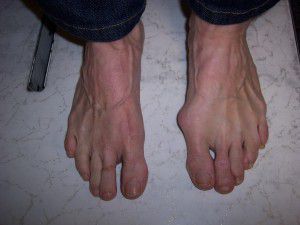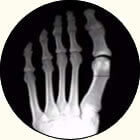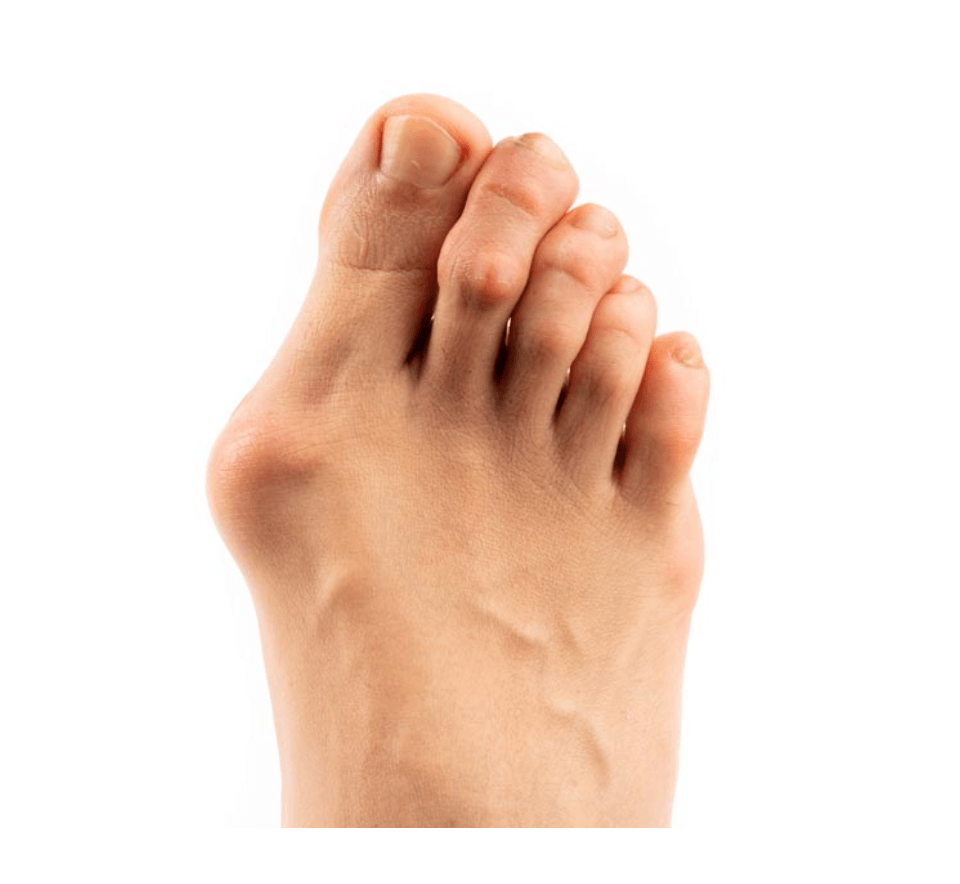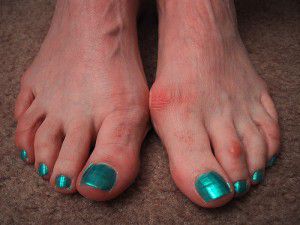bunion doctor
Displaying items by tag: bunion doctor
Dr Brandon Nelson, A Board-Certified Physician & Surgeon Discusses Why He Has Been Doing the Lapiplasty Procedure for over 15 years

Bunions are an inherited foot deformity that can be exasperated by shoe gear and activities. They are created when your first metatarsal begins to shift out of place to stabilize your foot. They usually become worse with time and eventually cause pain and discomfort. Many patients require surgical intervention.
The surgical correction of a bunion can have great outcomes and provide long lasting benefits. In the United States there are many different approaches to correction of a bunion. I have been operating long enough to have had experience in most of these procedures. That is why my bunion correction of choice is Lapidus or Lapiplasty.
The Lapidus or Lapiplasty is a procedure that dates back almost 100 years. It was first described by Dr Lapidus and to date has stood the test of time for bunion correction. It involves utilizing a fusion of 2 bones at the apex of the bunion or where the bunion starts. This provides dynamic correction and great long-term stability. I find patients are happy with their new foot structure and often want the other side fixed as well.
If you have been contemplating bunion surgery, give me a call. I have an onsite surgery center that saves time and money. IV sedation provides for a great experience. If you would like a consultation for your bunion I can help. Call to make an appointment with me at 425-391-8666 or make an appointment online.
Sincerely,
American College of Foot & Ankle Surgeons
Dr Brandon Nelson, Discusses the Lapiplasty Procedure for The Best Possible Correction of a Bunion
Dr Brandon Nelson, Discusses the Lapiplasty Procedure for The Best Possible Correction of a Bunion
Bunions can be quite painful for people especially as they get larger and make it difficult to fit in shoes. Bunions tend to get bigger as time goes on and eventually push the other toes out of alignment. But what can be done to stop the bunion or even slow it down?
Many people want to know what can be done from a conservative standpoint to slow a bunion. I have seen all sorts of devices to pull the toes around to try and straighten a bunion. But, it should be known that the bunion is a bony pathology that is related to a change in position of the bone. This makes it impossible to apply something to the outside of the foot to fix a bone on the inside. However, there are a few things that can slow down a bunion. Most important is to understand a bunion gets larger the more pressure that is exerted on it.
Meaning the more you walk the bigger the bunion gets. This is where conservative therapy begins. The best now measure to intervene here is a prescription orthotic for bunion correction. I am not talking about an insert from a shoe store or online this must be done by a physician. This is a prescription medical device where biomechanical measurements and 3-D measurements of the foot are taken. The good news about this is most insurances cover this device as long as it is prescribed by your foot and ankle physician.
Surgical correction is the ultimate stop gate to the bunion getting bigger. There are many options for surgical correction but the one moving to the forefront of medicine today is the Lapiplasty. This procedure is based upon the Lapidus which has been utilized for almost 100 years. This is a tried and true method for getting amazing bunion correction and providing lasting results. If you have a bunion I can help. Give me a call at 425-391-8666 or make an appointment online today.
Sincerely,
Dr Brandon Nelson
Dr Brandon Nelson, A Board-Certified Physician & Surgeon Discusses Bunions and When To Fix Them

Bunions are an inherited foot deformity that is made worse with time and shoe gear. The size of a bunion increases as a person puts more mileage on their feet. It is the natural progression of a bunion to get larger and eventually become painful or make it difficult to fit shoes. I encourage anybody with a bunion to get evaluated early as there are tools to slow the progression of a bunion. But let’s focus on when you should think about having your bunion fixed.
Bunion surgery has really changed in the last couple years and more people than ever are having their bunions fixed. This is because research and techniques have advanced. We have seen a shift to correcting bunions at the apex or center of rotation where they occur. The most prevalent procedure is making a shift towards the Lapiplasty. I personally have been using this procedure for years and find it has the best long-term outcomes. So that leads us to when is the right time to fix a bunion.
I like to focus on the foot as an entire unit as the primary driver of when to fix a bunion. If you look down at your foot when you unload it or take it off the ground what does the big toe position look like? Is it crossing over or under the second digit? If it is, you are ready to have your bunion fixed. I advise my patients to have it fixed before this occurs. If you catch the bunion early and have the foot stabilized with bunion surgery before it crosses over the second toe that is even better. If you wait for the second toe to get involved, you will often need to have that toe operated on as well.
If you have a bunion I can help, call to make an appointment with me at 425-391-8666 or schedule an appointment online today.
Sincerely,
American College of Foot & Ankle SurgeonsDr Brandon Nelson, A Board-Certified Physician & Surgeon Discusses How The Lapiplasty Bunion Surgery Could Be Right For You
.jpg)
Bunion surgery has been utilized for more than 100 years. Recent advances in bunion surgery have created better outcomes and faster recoveries. I have been practicing now for 15 years and have not seen such a revolutionary product come to the market before. The lapiplasy system has changed bunion surgery for the better.
Lapiplasty has created a unique set of instruments to create reproducible outcomes. Previously surgeons relied on resecting bone without the use of cutting guides. The Lapiplasty system has guides and reduction clamps to get the same amount of correction every time. This has changed long-term results, making them more reliable with time.
Recovery has also changed. In the past patients could be non-weight bearing for up to 8-10 weeks. This new system often allows patients to bear weight at 2-4 weeks. Bearing weight sooner allows for improved function and less atrophy.
Lapiplasty is by far the most successful bunion surgery technique I have seen. If you are experiencing bunion pain, I can help call to make an appointment with me at 425-391-8666 or contact us online.
Sincerely,
American College of Foot & Ankle Surgeons
Dr Brandon Nelson, A Board Certified Physician & Surgeon, and the Lapiplasty Procedure for Bunion Correction

Today we find ourselves in a new era of healthcare. We have robots and small cameras and new instruments to utilize to improve outcomes and simplify procedures. When I completed residency 15 years ago we were introduced to these new devices. It has been interesting to see the evolution of these tools and new and exciting tools enter healthcare. One of the most advanced instrument sets I have seen is the Lapiplasty system by Treace Medical. This has revolutionized bunion surgery and made the surgeons part much easier and more reproducible.
The lapiplasty system is based on the lapidus procedure that was first described by Paul Lapidus almost 100 years ago. This procedure has been utilized in the Pacific Northwest for years. When I began my training the lapidus procedure for bunion correction was very popular as it provided great outcomes with low recurrence rates. The new lapiplasty system is based on the original surgical procedure but has tools that make the surgery easier to execute and recovery faster for patients.
The advantages of patients are numerous and I will discuss a few. First off any surgery should be reproducible. The jig and cutting system of the Lapiplasty has taken away the variability among surgeons and removed eyeballing of bone cuts. This makes for better long term outcomes and reliable positioning of bones for correction of bunions. Secondly it provides better fixation that allows faster recovery. Traditionally the Lapidus procedure can take quite a long time to transition to weight bearing and a normal shoe. This is a big advantage for the new Lapiplasty and one of my most favorite parts of the system.
If you have a bunion and would like to discuss Lapiplasty make an appointment with me today. Give us a call at 425-391-8666 or make an appointment online today.
Sincerely,
Dr. Brandon Nelson
Dr Timothy Young, A Board Certified Foot Surgeon On: Should I Get Bunion Surgery? Part 2

Dr Timothy Young, A Board Certified Foot Surgeon On: Should I Get Bunion Surgery? Part 2
Severity and Symptoms: The severity of your bunion and the related symptoms play a significant role in the decision-making process. If your bunion causes persistent pain, limits your ability to exercise or comfortably walk, or if it interferes with your daily life, surgery may be a viable option. Also if the bunion condition is progressing. Consulting with a qualified foot surgeon can help assess the severity of your bunion and provide guidance on the best course of action.
Benefits and Risks: Like any surgery, a bunion surgical procedure carries both risks and benefits. Risks can include infection, stiffness of the joint, nerve damage, recurrence of the bunion, or dissatisfaction with the cosmetic outcome. Conversely, the benefits can be significant, such as pain relief, improved foot function, and the ability to wear a wider range of footwear comfortably. Understanding and reviewing the potential risks and benefits with your foot surgeon is crucial in making an informed decision.
Lifestyle Considerations: Another important factor to consider is your lifestyle. Bunion surgery usually requires a period of recovery, during which you will need to limit your activities and wear special footwear or a boot. If you have an active lifestyle or have demanding work requirements, you should consider timing and how the recovery period could affect your daily activities. It's important to discuss these considerations with your surgeon to determine the most appropriate timing for the foot surgery.
If you are experiencing foot or ankle pain, please give us a call at 425-391-8666 or make an appointment online today.
Dr Brandon Nelson, A Board Certified Physician & Surgeon Discuses Bunion Surgery and What to Expect During Recovery

Bunion surgery continues to be one of the most common surgical procedures performed in the United States. In the United States approximately 150,000 are operated on annually. The satisfaction and success rate are high, and most patients are happy with their outcomes.
It is important be well prepared for bunion surgery and I will discuss a few tips that will make the process easier.
1. Make sure you are prepared before the day of surgery and have somebody to help for the first 24 hours
2. Set up a central command, ie a bed downstairs that you have all your necessary items near. Your medications, a bathroom, and some entertainment.
3. Bathroom - you may want to investigate a booster seat for your toilet. It can be difficult if it is too low to stand up once seated.
4. Shower, consider a shower chair or stool
5. Cast cover of something to keep your leg dry
6. Vitamin supplements, I like collagen and bone healing supplements
7. Understand your post-operative course
8. Icing - do not underestimate the importance of icing and elevation for the first 72 hours.
9. Exercise to prevent blood clot, ankle rotations, leg lifts.
I hope you find some of these tips helpful. If you are experiencing foot or ankle pain, give us a call today at 425-391-8666 or make an appointment online.
Sincerely,
Dr. Brandon Nelson, A Board-Certified Physician and Surgeon, Discusses the Lapiplasty and Bunion Surgery

Bunion surgery has been around for almost 200 years. There have been many types of bunion surgeries performed during this time. The vast majority involved cutting the bone and realigning the joint. The recent years have allowed for advancement in correction techniques and better long-term outcomes. Presently most surgeons either utilize a head technique, cutting the bone and realigning, or a base technique, which usually involves fusion or a Lapidus type procedure.
Lapiplasty has improved outcomes by creating a system that is reproducible and easier for surgeons to execute. It involves a system of tools that the surgeon gets the proper correction for all patients. The Lapiplasty is a new way of doing a bunion surgery that has been around for over 100 years. The Lapidus bunionectomy is one of the most tried and true bunion correction surgeries and has great outcomes. It is the primary work horse of bunion surgery and is probably the most common procedure I utilize. If you have a painful bunion and would like to have it evaluated, make an appointment today and I will help you come up with a long term plan. Give us a call at 425-391-8666 or make an appointment online today.
Sincerely,
Dr. Brandon Nelson, Board-Certified Physician and Surgeon, Discusses #1 Bunion Currently in the United States.

Bunion surgery continues to be the most common foot surgery United States. Tens of thousands are performed annually. The vast majority of these are performed in an outpatient setting less than a couple hours. A large percentage of these patients can begin weightbearing shortly after the procedure.
Currently there is a lot of literature around the Lapiplasty which is the device to help improve bunion correction. The idea behind the device is a 3 plane correction of the bunion this been utilized for over 6 years and on over 35,000 patients. Lateral last he device helps to correct, cut, compress and fixate the bunion procedure.
First component of the laminoplasty is correct. The device is utilized to correct the bunion in all 3 cardinal planes by allowing and alignment correction or making any cuts in the bone. A second component for contact performed via sisal J which allows an average cut between 2.4 and 3.1 mm average shortening. Third component or compresses utilized to achieve compression of the joint while maintaining the 3-D correction. The fourth and final fixate is plate system that has been biomechanically tested for multiple complaints stability and rapid return to weightbearing.
I have had experience using the lapiplasty system. The Lapidus bunionectomy remains one of my most commonly performed surgical procedures. It has great power of correction for large bunion deformities and patients with significant instability. If you currently are experiencing bunion pain and are interested in the laminoplasty I am happy to help.
Sincerely,
Board-certified American College of Foot and Ankle Surgeons
Board-certified American College of Podiatric Medicine
Dr Brandon Nelson, a Board-Certified Physician and Surgeon, Discusses What His Patients Experience After Bunion Surgery

I have now been operating for about 15 years and can tell you bunion surgery has really changed. In the average week I correct 3-5 bunions and have now operated on 1000’s of bunions. Some bunions are small, and some are large and very complex, but all can be fixed. I continue to learn and research new techniques, and these have afforded me opportunities and skills to provide great outcomes and minimal down time.
In the past bunion surgery was done at the hospital and often required and overnight stay. Patients were placed in casts and often non-weight bearing for months. I have heard stories of patients being uncomfortable for weeks.
I can tell you techniques have changed, and I am happy to outline how the average patient experience goes at my clinic. My clinic has an onsite surgery center that provides a huge cost and time savings as compared to a free-standing surgery center or a hospital. Most bunion cases are completed in under 3 hours from the time one enters the clinic to when ones leaves. We utilize IV sedation which is safer and allows me to perform a nerve block for long term pain relief. Pain medication is only needed for a few days and many patients do not even take anything apart from an NSAID. Weight bearing status depends on any ancillary procedures, but most bunion patients can walk immediately after surgery.
If you have bunion and have been contemplating having it fixed make an appointment today and I will review your options and help you make an informed decision.
Sincerely,



